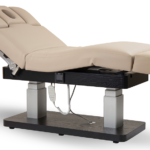
How to Pick the Best VLSI Training Institute
Choosing the best training program is essential if you want to acquire the information and skills needed for a successful career in the quickly developing field of VLSI design and verification. This blog attempts to offer advice on picking the best VLSI training facility, with a particular emphasis on training for automotive embedded systems and industry protocol training. You can make an informed choice and start your VLSI training journey by taking into account crucial elements and keywords such industry relevance, course content, faculty expertise, practical exposure, and alumni network.
Industry Relevance : It is crucial to take the industry into account when selecting a VLSI training facility, especially for training in automotive embedded systems and industry protocol training. Look for institutions that have relationships or collaborations with reputable semiconductor manufacturers or automakers. These links make sure that the training programs are in line with what the market needs right now and expose students to case studies and real-world initiatives. Look for institutions that provide courses with a focus on automotive embedded systems and that cover standards like CAN, LIN, FlexRay, and Ethernet.
Course Content : Assess the training facility’s course offerings. It ought to include a thorough comprehension of the fundamentals of VLSI RTL design and verification, with an emphasis on automotive embedded systems and industry protocol training. Digital and analog design, FPGA programming, hardware description languages (HDL), verification techniques, low-power design, and signal integrity should all be covered in the course material. In particular, look for courses that have sections on system-on-chip (SoC) design, automotive applications, and industry-standard protocols.
Expertise of the Faculty : The knowledge and skills of the faculty members are extremely important to the caliber of instruction and training. Examine the histories of the teachers at the training facility, paying particular attention to their professional experience, educational background, and research accomplishments. Effective knowledge transfer and direction will be provided throughout the training program by knowledgeable faculty members, notably in the automotive domain, with a solid history in VLSI design and verification.
Experience in the Industry : Professors with extensive experience in the industry contribute practical knowledge and real-world perspectives to the classroom. Look for VLSI training facilities that have industry partnerships or faculty members that have experience working for reputable semiconductor firms. The learning process is enriched by their first-hand knowledge of VLSI design projects, working with industry tools and processes, and overcoming obstacles in the real world. Industry-experienced professors may offer insightful advice on market developments, cutting-edge technologies, and the competencies needed to succeed in a competitive VLSI environment.
Academic Background : Take into account the faculty members’ academic backgrounds. Look for instructors who have advanced degrees in pertinent fields like VLSI design, computer science, or electrical engineering. Advanced degrees show a strong background in the field and a dedication to lifelong study. Additionally, confirm whether the instructors hold certifications or have received specialized instruction in VLSI design and verification. Such qualifications attest to their knowledge and dedication to staying current with industry changes.
Contributions to Research : Faculty members who actively engage in VLSI-related research bring a higher degree of knowledge to the training center. Their engagement in furthering the topic is evidenced by their research output, patents, and attendance at conferences or business gatherings. These academics are deeply knowledgeable about modern technology, cutting-edge design approaches, and business difficulties. Students may be inspired to think creatively and explore novel VLSI design possibilities by their research-oriented approach.
Teaching approach : For learning to be successful, a good teaching approach is crucial. Analyze the teaching strategies used by the faculty at the VLSI training center. Look for instructors that can break down complicated ideas into simpler terms, involve students in interactive lessons, and use real-world examples to support theoretical understanding. For thorough learning, one must be able to articulate and comprehend complex VLSI concepts. Examine the accessibility of materials that support the teaching process, such as lecture notes, reference books, and internet platforms.
Industry Connections : Academic research can be applied in the real world thanks to faculty who keep close ties to the industry. Ask about the training center’s partnerships with semiconductor manufacturers, the industry experts who come to provide guest lectures, or the chances for industry contact. These relationships make it easier to learn about current business trends, attend guest lectures from business leaders, and find internship or employment possibilities. An industry-connected faculty member makes sure that the training curriculum is in line with business needs and gives students marketable practical skills.
Practical Exposure : When teaching VLSI, a practical approach is crucial. Look for institutions that offer practical training using simulation environments, FPGA development boards, and industry-standard tools like Cadence or Synopsys. The training program should include project work, lab exercises, and practical workshops. As these experiences promote practical learning and improve industry preparedness, find out if any partnerships exist with automotive or semiconductor businesses that offer internship opportunities or real-world project exposure.
Placements and the alumni network :
Take into account the placement aid and alumni network of the training facility. Ask former trainees about their experiences both during and after the program. A thriving alumni community reflects well on the school and its capacity to provide doors for employment. Consider the institute’s industry affiliations, partnerships, and placement statistics as well as its work in the semiconductor and automotive embedded systems industries. The probability of finding employment in the sector is greatly increased by the availability of internship programs, campus placements, and industry connections.
Conclusion : For a successful career in the sector, selecting the best VLSI training center that specializes in automotive embedded systems and industry protocol training is crucial. You may make an informed choice by taking into account elements like industry relevance, course content, faculty knowledge, hands-on experience, and alumni network. You may gain the skills and knowledge you need to succeed in the VLSI sector by making an investment in a thorough training program that offers practical experience, industry collaborations, and solid placement help. In order to become a knowledgeable VLSI specialist in the automobile industry, conduct thorough research, weigh your options, and set out on your journe


















